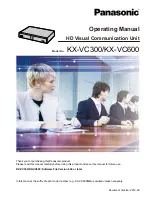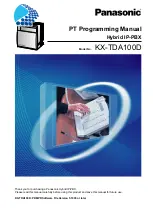
Room Design and Layout
A - 7
only 2’ or 3’ from nearest in-focus to furthest in-focus. With bright light (70fc
or more) the range of in-focus objects can more than double. Participants at the
far-end will see more people in sharp focus, and the codec will have an easier
time encoding the image.
Bright standard direct fluorescent lighting has the undesirable side effect of
being harsh for the local participants. In addition, the direct down lighting
casts significant “drop shadows.” The result is undue stress among
participants.
The best plan for videoconferencing is to use indirect lighting for 80 to 85
percent of the light, and evenly distributed direct lighting for the remaining 15
to 20 percent. The indirect light will help minimize shadows on the faces of the
participants, and make the room more comfortable for viewing the far-end on
the TV monitor. The direct light can be used to create backlight separation
between foreground and background objects or surfaces.
There should be not less than 55fc and ideally as much as 75fc of light (770lux)
on the faces of the participants in the facial field as viewed by the camera in the
conference space. The light should be completely even across the field of
measure or view, and of one consistent color temperature.
To best meet these requirements, indirect fluorescent lighting most often is
recommended. This type of lighting works by using the upper walls and
ceiling as diffuse reflectors for the light. The usual recommended color
temperature for these is 3,000 to 3,800 degrees Kelvin. If there is a significant
quantity of outdoor light entering the room, the lamps should be more than
5,500 degrees Kelvin.
Light Fixtures
The light fixtures generally recommended for indirect lighting are available
from a number of manufacturers. They typically are three-tube, 8” oval
indirect up-lights, though they may take the form of chandelier-style pendant
lights, wall sconces, cove lights or flushmounted specialized troughs. Many
manufacturers work closely with contractors and lighting designers to ensure
that the correct light levels and shadow-free zones are designed into the room,
especially when used for videoconferencing. Lamps for these fixtures are
available in a variety of specified color temperatures from numerous
manufacturers, including Sylvania, General Electric and Osram/Phillips.
Indirect fixtures are available in a number of different designs or “looks,” and
can be purchased in configurations that will complement and not detract from
the interior design of the space.
Lighting layout recommendations and determination of the number of
fixtures needed are handled either by the architectural design firm or by
submitting a complete floor plan, including reflected ceiling, walls and
furniture placement, to fixture vendors. The vendors will analyze the plans
and return a finished lighting layout to the customer, detailing the number of
fixtures, placement and required wiring.
Summary of Contents for VSX 7000s Series
Page 169: ...System Commands 4 93 exit Ends the API command session Syntax exit ...
Page 390: ...Integrator s Reference Manual for the VSX Series A 14 ...
Page 400: ...Integrator s Reference Manual for the VSX Series C 2 ...
Page 406: ...Integrator s Reference Manual for the VSX Series E 4 ...
Page 410: ...Integrator s Reference Manual for the VSX Series F 4 ...
















































